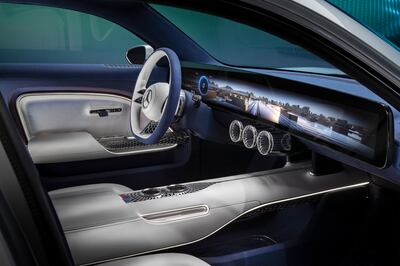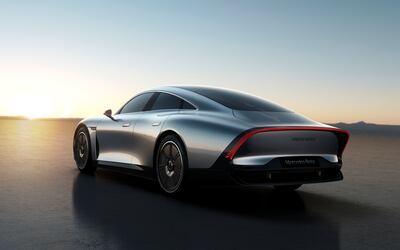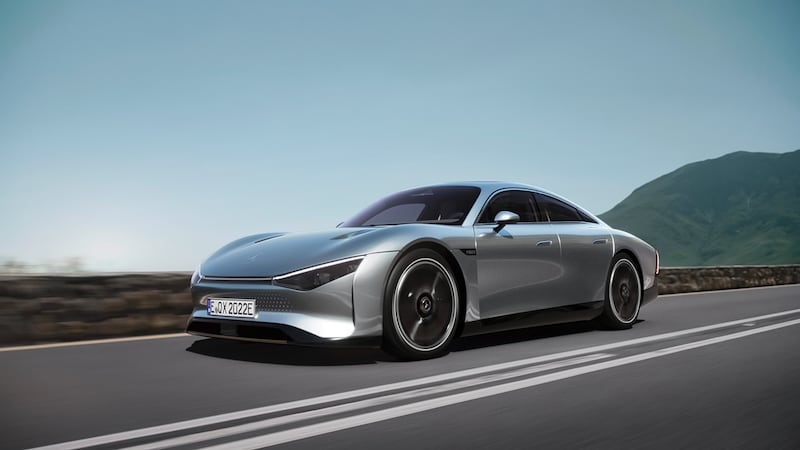Mercedes-Benz is taking its EV onslaught to the next level with the Vision EQXX – a cutting-edge concept that claims to deliver a touring range of 1,000 kilometres via an innovative battery pack that can allegedly fit in a compact car.
The EQXX is a precursor to upcoming electric vehicles from Mercedes, and the Stuttgart manufacturer says the concept rips up the automotive engineering rule book with its dizzying stats.
Energy efficient
“The Mercedes-Benz Vision EQXX is how we imagine the future of electric cars. Just one and a half years ago, we started this project leading to the most efficient Mercedes-Benz ever built – with an outstanding energy consumption of less than 10 kWh per 100 kilometres,” says Ola Kallenius, chairman of the board at Mercedes-Benz and Daimler AG. To put this figure in perspective, 10kWh is the energy required to run a tumble dryer for about three hours.
“The Vision EQXX has a range of more than 1,000km on a single charge using a battery that would fit even into a compact vehicle,” says Kallenius. “It is an advanced car in so many dimensions – and it even looks stunning and futuristic. With that, it underlines where our company is headed: we will build the world’s most desirable electric cars.”

Clever software
Mercedes claims Vision EQXX showcases the efficiency gains that are possible through rethinking the fundamentals from the ground up. This includes advances across all elements of its pioneering electric drivetrain, as well as the use of lightweight engineering and sustainable materials. Not surprisingly, clever software is also part of the recipe.
Mercedes quotes a peak power output of 204 horsepower for the Vision EQXX, which doesn’t sound all that impressive when the current EQS 580 4Matic pumps out 523hp, but the key stats to note are that the former weighs only 1,750 kilograms, whereas the latter tips the scales at a lardy 2,510kg. In other words, at least some of the power deficit is offset by the Vision EQXX’s waiflike girth.
Engineering excellence
Mercedes says the Vision EQXX went from white paper to completed vehicle in only 18 months. The company goes on to add that it drew talent not only from Merc’s multi-title-winning Formula One outfit, but also from various other start-ups, partners and institutions from around the world to form a cross-functional, multidisciplinary team.
The engineers at Mercedes AMG High Performance Powertrains, which produces the company’s F1 team’s power trains, know a thing or two about making every kilojoule of energy count, and their collaboration enables the Vision EQXX to slash system losses, as a result of which it’s claimed to offer 95 per cent efficiency. In other words, 95 per cent of the energy from the battery ends up at the wheels. Compare that to only 30 per cent from even the most efficient combustion-engine drivetrain or about 50 per cent from an average (human) long-distance runner.

The usual solution to increase the range of an EV is to stuff it with a larger battery, but the Mercedes-Benz and the HPP team have developed a completely new battery pack for the Vision EQXX, achieving an impressive energy density of close to 400 Wh/kg.
“In effect, we fitted the energy of the EQS into the vehicle dimensions of a compact car,” says Adam Allsopp, advanced technology director at High Performance Powertrains. “The battery has almost the same amount of energy, but is half the size and 30 per cent lighter.
Aerodynamic output
Another forward-thinking innovation is that the electric system that powers many of the Vision EQXX’s ancillaries draws additional energy from 117 solar cells on the roof. This reduces the drain on the battery pack, adding up to 25km of range on long-distance journeys in ideal conditions.
On a regular long-distance drive, a typical electric vehicle dedicates almost two-thirds of its battery capacity to carving its way through the air ahead, but the streamlined Vision EQXX is a big winner in this department as it has an ultra-slippery drag coefficient of 0.17, which eclipses even the 0.20 figure (the lower, the better) quoted for the EQS 450 – currently the world’s most aerodynamic production car.
While the Vision EQXX is currently only a concept, we can expect much of its tech and design elements to trickle down to Merc’s production EVs over the next couple of years.






